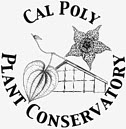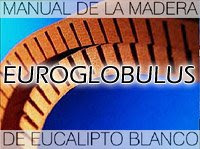By their fruits ye shall know them (III)
More small tips on Eucalyptus Identification
Gustavo Iglesias Trabado 
GIT Forestry Consulting - Consultoría y Servicios de Ingeniería Agroforestal - www.git-forestry.com

GIT Forestry Consulting - Consultoría y Servicios de Ingeniería Agroforestal - www.git-forestry.com
We have previously seen in EUCALYPTOLOGICS how bark features alone can be misleading for accurate Eucalyptus species identification, showing examples of different bark types for the same eucalypt species and of similar bark types for different eucalypt species. Today we will see how in some cases just a small sample of flower buds can yield an accurate identification.
 Fig. 1: Example of flower bud based diagnosis useful for accurate Eucalyptus species identification (Click image to enlarge)
Fig. 1: Example of flower bud based diagnosis useful for accurate Eucalyptus species identification (Click image to enlarge)Our good friend Dan at Tree-Species.com found a strange looking Eucalyptus growing in Málaga and followed our recommended sequential observation process for eucalypt identification. He later sent us photographs of the overall outlook of the tree, its bark and of samples of reproductive organs (flower buds & seed cups) he collected from the tree.
 Fig. 2: Examples of distinct flower bud characteristics in different Eucalyptus species. (Click image to enlarge)
Fig. 2: Examples of distinct flower bud characteristics in different Eucalyptus species. (Click image to enlarge)These flower bud samples were what allowed an accurate botanical identification of this Eucalyptus tree (see Fig. 1) by comparison to an holotype (botanical plate) and to specimens of that eucalypt species growing in its natural Australian habitat. And the solution was Eucalyptus gomphocephala, literally meaning "bolt-headed well-covered flower", also known by its vernacular name Tuart.
In addition, a look back in time and paying attention to eucalypt experts of the past does normally yield some sort of useful complementary data that helps to support or reject a purported Eucalyptus species identification. O Grande Ernesto diz:
"In the Mediterranean Basin it follows E. camaldulensis and E. globulus as the most used species for afforestation, especially in Northern Africa. It has been promoted in Southern Morocco to plant on calcareous soils, mostly on coastal dunes. Actually, existing plantations on the dunes of Agadir and Mogador and at Sidi Bibi have proven this species to be of great interest, both as a way to fight the moving sands and as allowing to achieve a valuable production in these vast and previously improductive areas. (...) Total acreage planted with E. gomphocephala in Morocco reaches some thousand hectares. Also in Algeria, Tripolitania, Cyprus and Israel it is a quite planted species. In other Mediterranean countries only in Spain it has been used for plantings of certain importance, especially in the coastal dunes of Malaga."
Ernesto da Silva Goes (1960) Os eucaliptos em Portugal.
Eucalyptus species identification for this tree as E. gomphocephala makes sense then both in a botanical and an historical sense. No doubt, Eucalyptology is an interdisciplinary science.
Acknowledgements
To the Royal Botanic Gardens Sydney & Botanic Garden Trust for their kindness allowing educational use of their Australian plant images. To Martin Pritchard & The Busselton-Dunsborough Environment Centre for their effort in preservation and divulgation of the uniqueness of Ludlow Tuart Forests, where the tallest E. gomphocephala in the world still survive. To Dan Anderson & Tree Species for choosing EUCALYPTOLOGICS as their Eucalyptus advisors.
Also in Eucalyptologics...

Example of "bark only" diagnosis misleading Eucalyptus species identification (Click image to enlarge)
 Example of botanical sample gathering methodology for accurate Eucalyptus species identification (Click to enlarge)
Example of botanical sample gathering methodology for accurate Eucalyptus species identification (Click to enlarge)
Anthesis in Eucalyptus robusta (Swamp Mahogany) flowers.
Photography by Brian Johnston (Click image to enlarge)
Photography by Brian Johnston (Click image to enlarge)
 Maturation stages for eucalypt fruits collected on Corymbia calophylla (Marri) trees in a single visit, showing some of the internal organs within Eucalyptus infrutescences in each phase. (Click to enlarge)
Maturation stages for eucalypt fruits collected on Corymbia calophylla (Marri) trees in a single visit, showing some of the internal organs within Eucalyptus infrutescences in each phase. (Click to enlarge) Different simultaneous stages of the reproductive cycle and eucalypt seed maturation process in a standing Snow Gum Eucalyptus tree.(Click to enlarge)
Different simultaneous stages of the reproductive cycle and eucalypt seed maturation process in a standing Snow Gum Eucalyptus tree.(Click to enlarge) After Eucalyptus seed collection: examples of Eucalyptus seedling nursery stock for afforestation (Click to enlarge)
After Eucalyptus seed collection: examples of Eucalyptus seedling nursery stock for afforestation (Click to enlarge)Find a local expert to ID your Eucalyptus
If you have an unknown eucalypt around and you are able to collect and photograph samples of the key organs needed for identification, do not hesitate contacting GIT Forestry Consulting.

If you are in the USA and find it easier to post fresh samples to a local expert, you can also contact Dr. Matt Ritter, resident eucalypt hunter at the California Polytechnic State University.
 Visit Cal Poly Plant Conservatory
Visit Cal Poly Plant Conservatory
 Subscribe to receive EUCALYPTOLOGICS via e-mail
Subscribe to receive EUCALYPTOLOGICS via e-mail
 Visit Cal Poly Plant Conservatory
Visit Cal Poly Plant ConservatoryContact us / Subscribe to Eucalyptologics
![]() Subscribe to receive EUCALYPTOLOGICS via RSS
Subscribe to receive EUCALYPTOLOGICS via RSS
 Subscribe to receive EUCALYPTOLOGICS via e-mail
Subscribe to receive EUCALYPTOLOGICS via e-mail© 2008 Gustavo Iglesias Trabado. Please contact us if you want to use all or part of this text and photography elsewhere. We like to share, but we do not like rudeness.



































![Validate my Atom 1.0 feed [Valid Atom 1.0]](http://gus.iglesias.googlepages.com/valid-atom.png)



















0 Comments by our readers :::
Send a comment to EUCALYPTOLOGICS